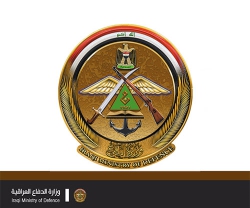A few weeks ago, the VSR700 demonstrator achieved a test flight that pushed its speed limit to 60kts (more than 110km/h), entirely opening its flight envelope at low speed. At the end of the test, the demonstrator had accumulated more than 10 flight hours. Thanks to this milestone, the VSR700 program is getting closer to its goal: providing the French Navy with a sea-demonstration-compatible Unmanned Aerial System (UAS).
After the launch of the program in early 2018, VSR700 underwent an initial series of tests, trying the aircraft’s basic functions. It has since seen numerous advancements, as the system performed its first fully autonomous take-off and landing over a moving platform in late 2020. What’s next for VSR700? “In 2021, one of our key objectives is to secure the flight performance of the future Système de Drone Aérien pour la Marine (SDAM) demonstrator, which will perform a sea trial mid-2022. This is expected to be achieved with two major campaigns this year,” explained Nicolas Delmas, Head of the VSR700 program.
The first campaign aims at expanding VSR700’s flight envelope. The process was in the works well before last month’s test flight and is continuously redefined by a team of engineers. Delmas noted that the coming together of people with various occupations and expertise greatly contributed to the test flight’s success: “Such a result was made possible only thanks to the hard work, tenacity, and commitment of different individuals with their diverse experience and competencies, who joined their forces to succeed together, as a team.”
During the envelope expansion campaign, the team explores the capabilities of the new aircraft, in order to monitor its response while performing at different speed levels, or covering a chosen distance. “The objective is to test the aircraft’s reaction when flying in conditions it hasn’t encountered yet, speed, altitude or mass-wise,” explained Arnaud Mesnil, Flight Test Engineer of the VSR700 program. As a result, the only way to assess the system’s behavior and prepare it for its future missions is to make it fly.
If the envelope expansion procedure is similar for all aircraft, VSR700 poses a unique challenge: testing the boundaries of a whole system, comprised of a drone, ground control station and data link platform. The next step towards the final testing phase of VSR700, which will occur during a second campaign at the end of 2021, will consist of upgrading the prototype with a complete operative mission system.
VSR700 Chief Engineer Samuel Leyder and his team also will use innovative techno-bricks to measure the range of the data system, and achieve a greater accuracy of the automatic pilot, making it fit for a wide range of military and parapublic missions. “This flight campaign is only the visible part of a huge backstage endeavor. It materializes the work of engineers, specialists and technicians that have all worked together to make it happen. With more than 10 flight hours performed, this first campaign reflects the maturity and confidence in our system, which is fully supported by the French Armament General Directorate’s high-quality regulation standards,” said Leyder. After reaching a speed of 60kts, VSR700 swiftly moves toward the threshold needed to perform the 2022 sea demonstration for the French Navy.
As VSR700 performs autonomous flights, it transforms the pilots’ role, as they won’t be flying the aircraft themselves, but rather supervising its flight plan. While the demonstrator is being tested, the pilot occupies a central place in overseeing its development: “We have to send different orders to the aircraft and manage its response. Thanks to our deep knowledge of the aircraft, we can react in the best possible way in case it starts malfunctioning,” explained Samuel Chartier, VSR700 Flight Test Pilot.
With more than 10 flight hours performed, this first campaign reflects the maturity and confidence in our system, which is fully supported by the French Armament General Directorate’s high-quality regulation standards.
In order to successfully perform missions as a UAS, VSR700 will have to stay within a determined flight path, remotely monitored by the pilot. “The pilot makes sure the flight path is respected, and is ready to intervene to preserve human and technical safety,” according to Chartier. If VSR700 exits the flight corridor, the pilot is able to launch a recovery move.
With VSR700, the pilot’s workload changes considerably, expanding horizons for other features and tasks that are currently undertaken by the pilots and engineering teams. Leyder sums up: “VSR700 is not only paving the way toward a new kind of product but is also re-inventing the way we are developing these products and the way we are flying them.”






















